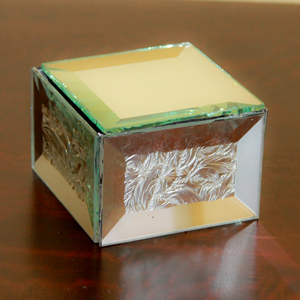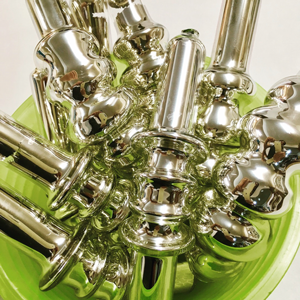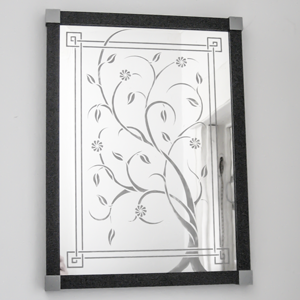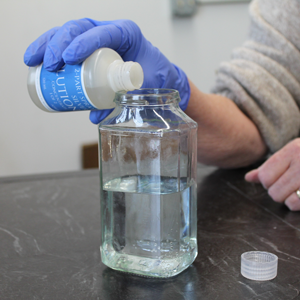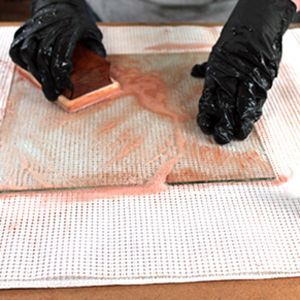How to Figure Out the Square Feet of Irregular Shapes


Since your Euclidean geometry may be a little rusty, we have some formulas to help you figure out how many square feet of glass you have in your project.
To convert American units of measurement into metric units, click here
Photo credit: Silvered Jewlery by Luisa Restrepo
Constant Numbers
Constant numbers are numbers that are the same for all formulas. The constant numbers for our formulas are:
π = 3.142. π (pi) is the ratio of the diameter to the circumference of a circle.
It is best expressed as 22/7. The math is easier if you use the (approximate) number 3.142
144 = 12" x 12" = the number of square inches in 1 square foot.
The math is easier if you measure everything in inches and divide the final answer by 144 to find the number of square feet.
Radius
r = radius. The radius of a circle is 1/2 the diameter. Example, a circle that measures 36" across has a radius of 18".
r2= the radius times the radius, not the radius times 2. Example 18" x 18" = 324"; not 36"
To find the radius of a sphere:
- Measure the distance around the sphere to find the circumference.
- Divide the circumference by 3.142 (π ) to find the diameter.
- Divide the diameter by 2 to find the radius.
Formulas For Flat Glass
Rectangle or square = length x width
Circle = π x r2
Oval or ellipse = π x major-axis x minor-axis. The major axis is 1/2 the length. The minor axis is 1/2 the width.
Example 1 -- A circle that is 15" across:
15 ÷ 2 = 7.5 (the radius)
7.5 x 7.5 = 56.25 (the radius squared)
56.25 x 3.142 = 176.79 (the radius squared multiplied by pi)
176.79 ÷ 144 = 1.23 square feet (square inches converted to square feet)
Example 2 -- An oval that is 18 inches long and 10 inches wide
18 ÷ 2 = 9 (the major axis)
10 ÷ 2 = 5 (the minor axis)
3.142 x 9 x 5 = 141 (π x major axis x minor axis)
141 ÷ 144 = 0.98 (square inches converted to square feet)
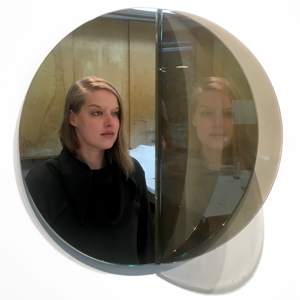

Formulas for Blown Glass
Remember, it is the surface area, not the volume, that you need to know. A long, thin tube has a smaller surface area than a globe that has the same volume.
How do you do the math? The easiest way is to mentally divide the object into sections with regular shapes. For example, an object shaped like a pencil can be thought of as a cylinder topped by a cone.
Sphere = 4π r2.
Open cylinder = 2π r l where "r" is the radius of the cross-section, "l" is its length
Open cone = π x r x s where "r" is the radius of the cross-section of the base, "s" is the length of the side
Rectangular box = w x h x l where "w" is the width, "h" is the height and "l" is the length
Example 1 -- You are mirroring the inside of a glass bowl that is 34 inches across. Imagine that the bowl is half a sphere. The radius of the bowl is half the diameter or 17 inches. Using the formula above, the surface area of half a sphere is 1/2 of 4πr2
1/2 of 4πr2 = 2πr2
2 x 3.142 x17 x 17 = 1,816.65 square inches
1,816.65 ÷ 144 = 12.62 square feet
Example 2 -- You have a blown glass bar-bell - in other words, with a couple of bulbs joined by a tube. Of course, you will need to have a hole where you can pour the liquids in and out.
- Let’s say that the bulbs are 3 inches in diameter so their radius is 1.5 inches. Since the bulbs are basically spheres, the formula to use is 4πr2
4 x 3.142 x 1.5 x 1.5 ÷ 144 = 0.2 square feet - Suppose the tube connecting them is 1 foot long and has a diameter of 1.5 inches. The radius would be 0.75 inches. The tube is an open cylinder and the formula to use is 2πrl.
2 x 3.142 x 0.75 x 12 ÷ 144 = 0.4 square feet - So the total surface area of the 2 spheres plus the cylinder is
0.2 + 0.2 + 0.4 = 0.8 square feet - This allows for the part of the sphere that is not there because of joining to the tube.


Formulas For 3-D Glass
When you are mirroring 3-D glass, use the formula that would fit your shape if the glass did not have an irregular surface. On small pieces, use a total of 15 ml (5 ml of each liquid) to get sufficient coverage.
